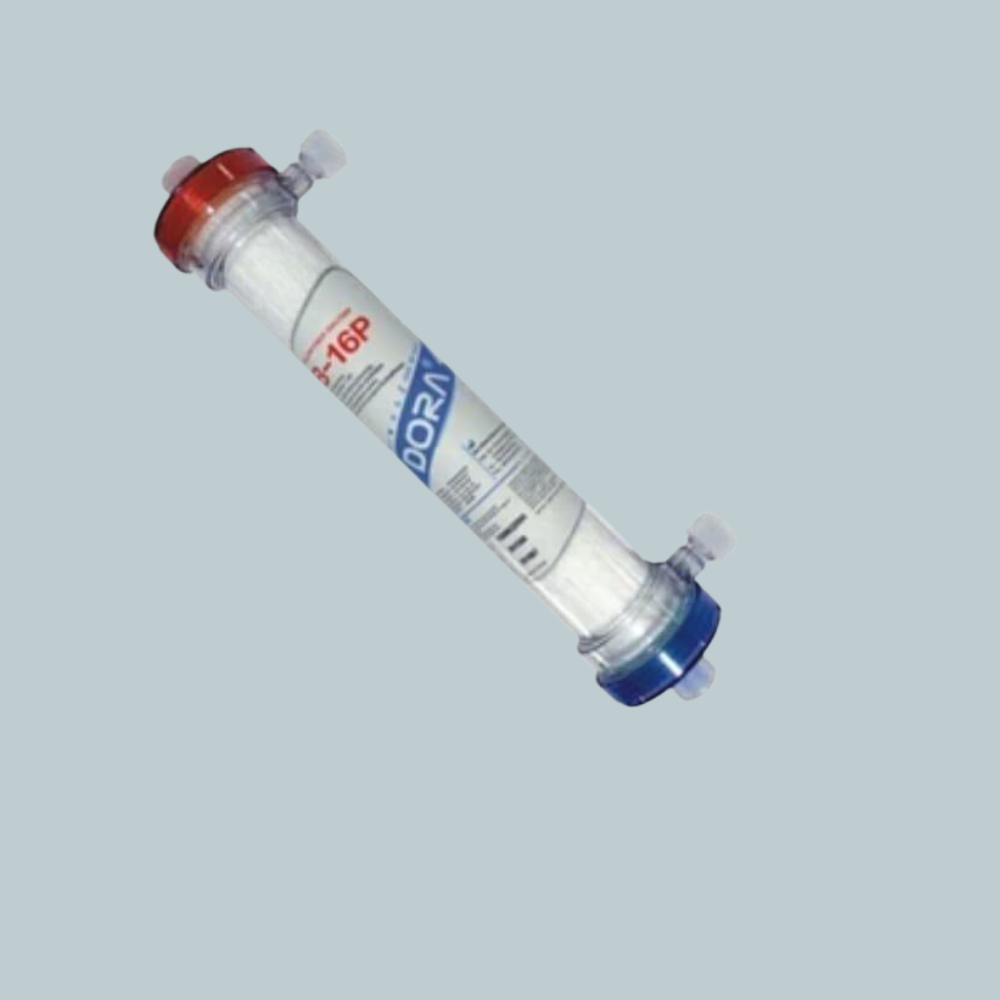The dialyzer has four ports, one inlet, and one outlet port each for blood and dialysate.
The semipermeable dialysis membrane separates the blood compartment and the dialysate compartment.
The transport processes across the membrane are diffusion (dialysis) and convection (ultrafiltration).
The removal of small solutes occurs primarily by diffusion; larger components, such as β2-microglobulin, are more effectively removed by convection.
There are majorly two types of Dialyzers – High Flux and Low Flux Dialyzers.
The term ‘flux’ refers to the permeability of the membrane in the dialyzer (artificial kidney) across which accumulated toxins and excess fluid pass during hemodialysis.
High flux membranes compared to low flux have larger pores and allow diffusion of greater amounts of uremic toxins and middle molecules such as β2 microglobulin and therefore they may decrease the risk of dialysis-related amyloidosis.
However, Low flux dialyzers are an option for acute and chronic dialysis where a lower rate of fluid removal (e.g., ultrafiltration coefficient) is desired.

